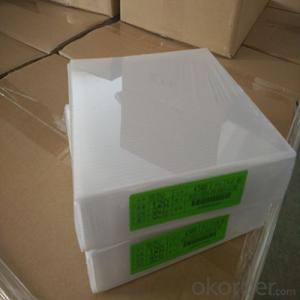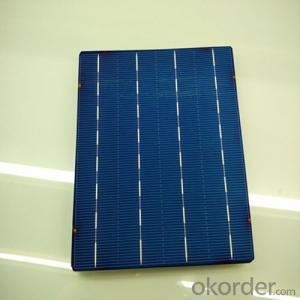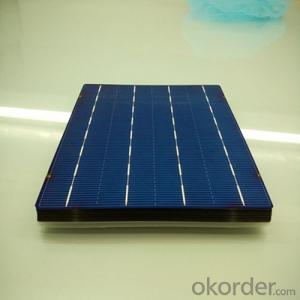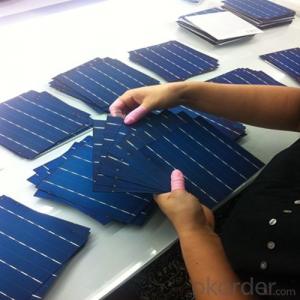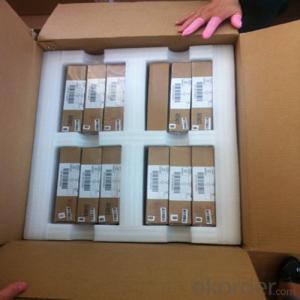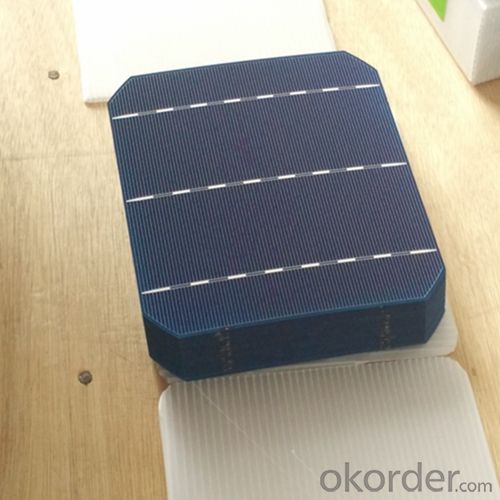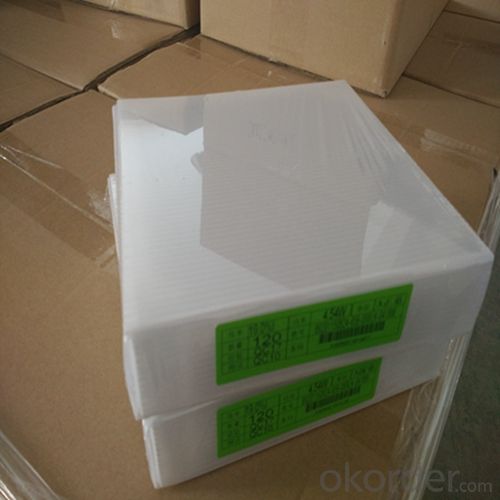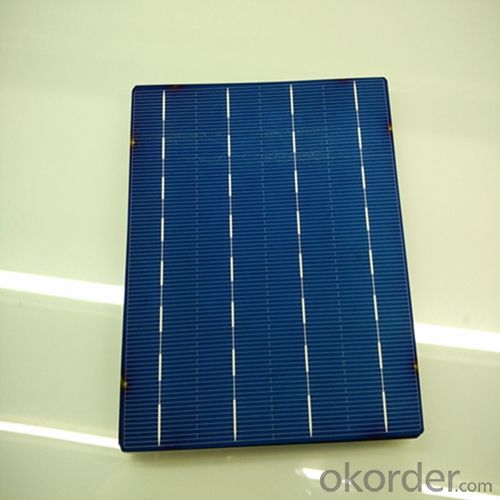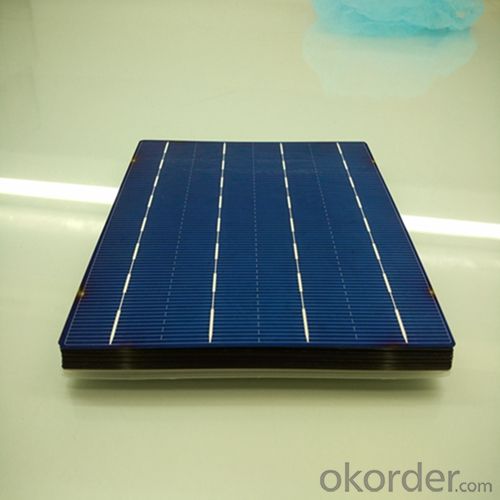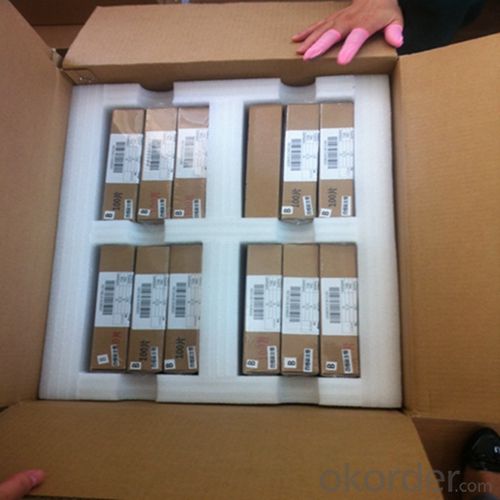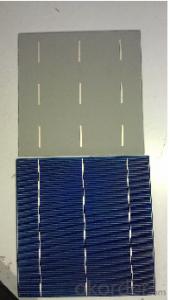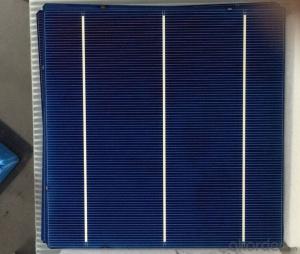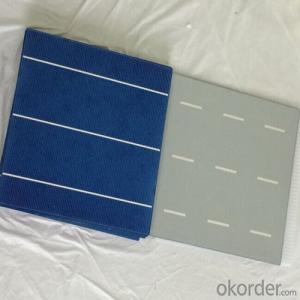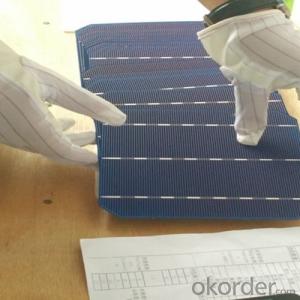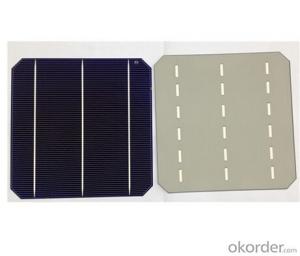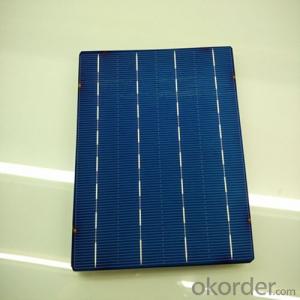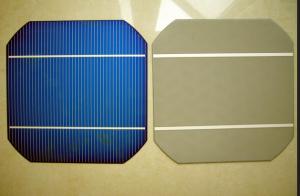Ribbon Silicon Solar Cells - Mono 156x156mm2 Made in China
- Loading Port:
- Shanghai
- Payment Terms:
- TT OR LC
- Min Order Qty:
- 6500 watt
- Supply Capability:
- 650000 watt/month
OKorder Service Pledge
OKorder Financial Service
You Might Also Like
Benefits of Solar Power:
Now is a great time to go solar and harvest the power of the sun. Here is our top ten list of the benefits to installing solar power:
When installed, solar energy is free – no resources are consumed
Help to lessen our dependence on heavily polluting coal power stations
Fossil fuels can't last forever, future generations will appreciate the effort
Characteristic of Mono 156X156MM2 Solar Cells
You are gaining energy independence - add battery backup power for even greater energy security
The cost of electricity is only going to rise – insure against that rising cost
Quality solar power and water adds value and appeal to your home
Specifications of Mono 156X156MM2 Solar Cells
Solar PV systems are easily upgraded in future - aim to make your house a net energy producer!
Solar panels offer a long lifetime of low maintenance service, maybe 30-40 years
Your friends will think you're great!
You'll feel great for doing your bit for the environment!
Mechanical data and design
Format | 156mm x 156mm±0.5mm |
Thickness | 210μm±40μm |
Front(-) | 1.5mm bus bar (silver),blue anti-reflection coating (silicon nitride) |
Back (+) | 2.5mm wide soldering pads (sliver) back surface field (aluminium) |
Temperature Coefficient of Cells
Voc. Temp.coef.%/K | -0.35% |
Isc. Temp.coef .%/K | +0.024%/K |
Pm.Temp.coef. %/K | -0.47%/K |
Electrical Characteristic
Effiency(%) | Pmpp(W) | Umpp(V) | Impp(A) | Uoc(V) | Isc(A) | FF(%) |
18.35 | 4.384 | 0.526 | 8.333 | 0.63 | 8.877 | 78.39% |
18.20 | 4.349 | 0.526 | 8.263 | 0.63 | 8.789 | 78.54% |
18.05 | 4.313 | 0.525 | 8.216 | 0.63 | 8.741 | 78.32% |
17.90 | 4.277 | 0.524 | 8.161 | 0.625 | 8.713 | 78.04% |
17.75 | 4.241 | 0.523 | 8.116 | 0.625 | 8.678 | 77.70% |
17.60 | 4.206 | 0.521 | 8.073 | 0.625 | 8.657 | 77.36% |
17.45 | 4.170 | 0.519 | 8.039 | 0.625 | 8.633 | 76.92% |
17.30 | 4.134 | 0.517 | 8.004 | 0.625 | 8.622 | 76.59% |
17.15 | 4.096 | 0.516 | 7.938 | 0.625 | 8.537 | 76.80% |
17.00 | 4.062 | 0.512 | 7.933 | 0.625 | 8.531 | 76.18% |
16.75 | 4.002 | 0.511 | 7.828 | 0.625 | 8.499 | 75.34% |
16.50 | 3.940 | 0.510 | 7.731 | 0.625 | 8.484 | 74.36% |
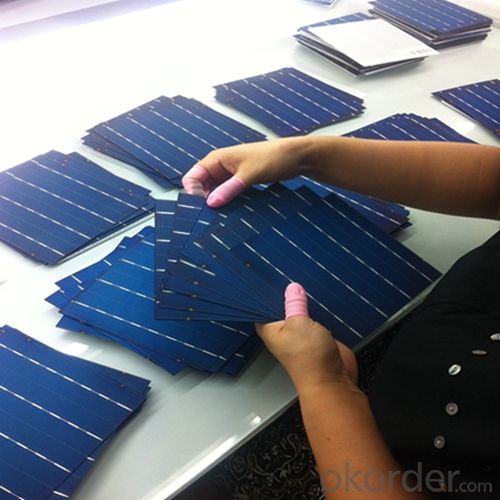
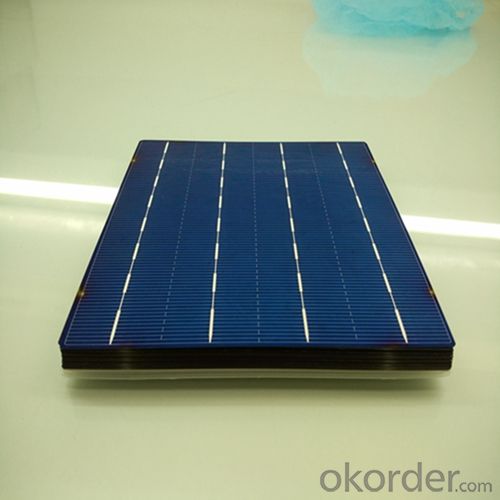
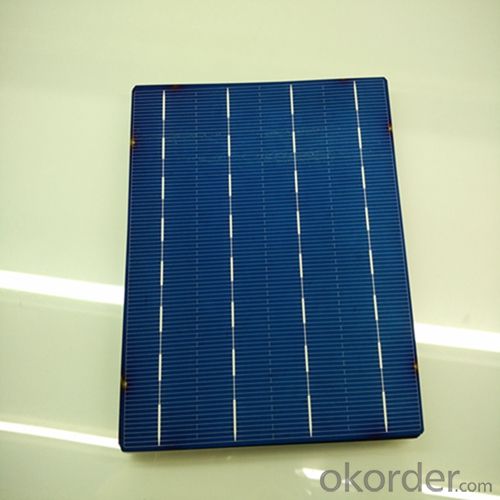
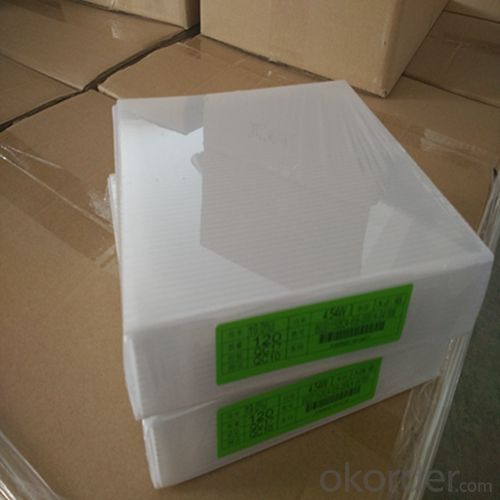
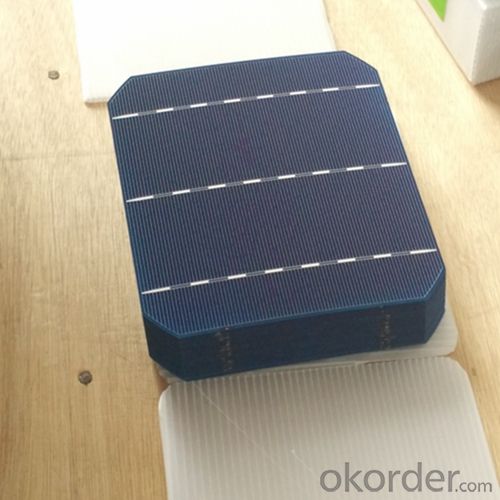
FAQ
Q: What price for each watt?
A: It depends on the quantity, delivery date and payment terms, generally Large Quantity and Low Price
Q: What is your size for each module? Can you tell me the Parameter of your module?
A: We have different series of panels in different output, both c-Si and a-Si. Please take the specification sheet for your reference.
Q: What is your size for each module? Can you tell me the Parameter of your module?
A: We have different series of panels in different output, both c-Si and a-Si. Please take the specification sheet for your reference.
- Q: What is a monocrystalline solar cell?
- A monocrystalline solar cell is a type of solar cell made from a single crystal structure, typically of silicon. It is known for its high efficiency in converting sunlight into electricity due to its uniform crystal lattice structure, which allows for better electron flow. Monocrystalline solar cells are widely used in photovoltaic systems due to their excellent performance and durability.
- Q: Can solar cells be used in space heating systems?
- Yes, solar cells can be used in space heating systems. Solar thermal systems can collect and convert sunlight into heat energy, which can then be used to heat spaces. Solar panels can also be used to generate electricity, which can power electric space heaters.
- Q: How do solar cells perform in urban environments?
- Solar cells can perform well in urban environments, although their efficiency may be slightly reduced compared to rural or open areas due to factors like shading from buildings and pollution. However, advancements in technology and design have made urban solar installations more efficient by utilizing innovative mounting options and optimizing solar panel angles. Additionally, the increasing number of rooftop solar installations in cities has enabled effective utilization of available space and contributed to the growth of renewable energy in urban areas.
- Q: Where and how can we find the best solar cells suppliers?
- To answer your first question, where to find the solar cell supplier, my answer is on the internet, where you can find any information you want to know.
- Q: How do solar cells perform in different temperature ranges?
- Solar cells generally perform less efficiently at high temperatures. This is because the increase in temperature can lead to an increase in electron-hole recombination, reducing the overall photoelectric conversion efficiency. On the other hand, solar cells can also experience a decrease in performance at extremely low temperatures, although this effect is usually less significant. Overall, the efficiency of solar cells varies with temperature, with a decline at high temperatures and a smaller impact at low temperatures.
- Q: Can solar cells be used in desert areas?
- Yes, solar cells can be used in desert areas. In fact, desert areas are considered to be ideal locations for solar energy production due to their high levels of solar radiation and clear skies. The abundance of sunlight allows solar cells to generate electricity efficiently, making them a suitable and sustainable energy solution for desert regions.
- Q: Can solar cells be used in recreational vehicles (RVs)?
- Yes, solar cells can be used in recreational vehicles (RVs). Solar panels can be installed on the roof of an RV to generate electricity from sunlight, which can then be used to power various appliances and systems in the vehicle. This provides a sustainable and eco-friendly way to generate power while on the road.
- Q: Can solar cells be used in desalination plants?
- Yes, solar cells can be used in desalination plants. Solar energy can be harnessed by solar cells to power the desalination process, making it a sustainable and environmentally friendly approach. The solar cells can generate electricity to run the desalination equipment, such as reverse osmosis systems, efficiently converting saltwater into freshwater.
- Q: Can solar cells be used on rooftops with different orientations?
- Yes, solar cells can be used on rooftops with different orientations. While the ideal orientation for maximum solar energy production is typically facing south, solar panels can still generate electricity when installed on rooftops facing east, west, or even north. The efficiency and energy output may be slightly lower, but advancements in solar technology and the ability to tilt and adjust panel angles can help optimize energy production on rooftops with varying orientations.
- Q: How do solar cells handle snow or ice accumulation?
- Solar cells can handle snow or ice accumulation by either melting the snow or ice due to their ability to absorb sunlight and convert it into electricity, or by allowing the snow or ice to slide off the surface due to their smooth and slippery design. Additionally, some solar panels are tilted at an angle, which helps prevent snow or ice buildup by allowing it to slide off more easily.
Send your message to us
Ribbon Silicon Solar Cells - Mono 156x156mm2 Made in China
- Loading Port:
- Shanghai
- Payment Terms:
- TT OR LC
- Min Order Qty:
- 6500 watt
- Supply Capability:
- 650000 watt/month
OKorder Service Pledge
OKorder Financial Service
Similar products
Hot products
Hot Searches
Related keywords

